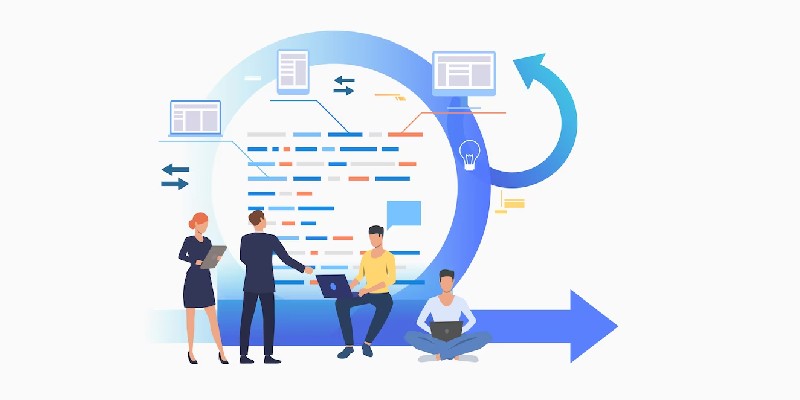- AI

Artificial Intelligence

Smart Products & Services
We follow Smart Products & Services

Intelligent Business Functions & Processes
We follow Intelligent Business Functions & Processes

Robotic Process Automation
We follow Robotic Process Automation

Personalized
healthcareWe follow Personalized healthcare

Identifying at-risk patients
We follow Identifying at-risk patients

Optimized routing and scheduling
We follow Optimized routing and scheduling
- ML

Machine Learning

Predictive
AnalyticsWe follow Predictive Analytics

Service Personalization
We follow Service Personalization

NLP
We follow NLP (Natural Language Processing)

Stock Market Forecasting
We follow Stock Market Forecasting

Fraud Prevention
We follow Fraud Prevention

Recommender engines
We follow Recommender engines
- blockchain
- IOT

Internet of Things
- AR
- Business Solutions

Business Solution

Business Performance Management
We follow Business Performance Management

Decision Making & Big Data Analytics
We follow Decision Making & Big Data Analytics

Enterprise Data Management
We follow Enterprise Data Management
- Apps

Apps

Native Apps
We follow Native Apps

Cross Platform Apps
We follow Cross Platform Apps

Web Apps
We follow Web Apps

Hybrid Apps
We follow Hybrid Apps

Cloud Native Apps
We follow Cloud Native Apps
- Lab

Top 5 Development Methodologies Used by Leading Software Houses
Explore this blog if you’re looking for reliable, scalable, and effective software development or to improve your software development procedure with guaranteed excellence.
Whether utilising in-house teams or opting for the best software house in the UK, utilising numerous software development methodologies for a project is vital. The main objective? Facilitate the formation of smooth project management customised to the business model.
Remember that not all aspects of software development have a one-size-fits-all approach. There are some universal methods, but flexibility is key. The cross-functional development team usually goes through well-defined and easily distinguishable software development phases to attain a major-scale outcome.
The world spending on its company software is estimated to be over $755 billion until the year 2023 ends. Some of these funds go towards software development firms for improved and modernised techniques.
In this blog post, we shall talk about software development methods, highlighting the top five.
Therefore, look through it, ascertain the software development methodologies, and why Sky Potential UK is the most suitable partner for your project.
What are software development methodologies?

A structured technique or framework that steers the procedure of software building is termed a software development methodology.
Software engineers have a large advantage from these methodologies, delivering a well-defined framework for better effectiveness, excellence, communication, and overall project achievement.
Also referred to as software engineering methodologies, these techniques apply engineering principles to the software development procedure.
Numerous formats, techniques, and practises are implemented during the software development phases. So you can,
- Effectively organise the entire workflow.
- Minimise project schedules.
- Reduce the cost of constructing software.
- Track the entire development procedure.
- Provide a set of clauses for enhanced communication.
- Test and improve the excellence of the final items.
After comprehending the definition of a software development methodology, the following section delves into the top 5 methodologies.
Need help in selecting the correct software development methodology? Allow our best software house in the UK experts to lead you in picking the correct technique for your software project.
Whether for app or enterprise software or website design and development, we are here to guide you.
Top 5 Kinds of Software Development Methodologies
In the SDLC or “software development lifecycle” phases, each software methodology offers clear-cut and effortlessly distinguishable abilities and elements, assisting our software engineers.
Choosing the correct software methodology and combining agile methods for particular kinds of software development can pose a dare – a challenge we routinely navigate.
To address this, we have carefully crafted a large-scale comparison of software methodologies in line with our client’s business vision, model, strategy, and needs. This comparison aims to give you a deep comprehension of why these are necessary when developing any digital product.
The methodologies we discussed here help our software house team in the UK choose the most fitting methodology for the prosperous completion of our client’s software development.
1. Agile development methodology
The agile development methodology is a disciplined software management procedure utilised in software development.
It offers a structured framework for software engineers and development teams, guaranteeing effective strategising, design, implementation, testing, deployment, and maintenance of software items.
Agile facilitates effective sprint strategising by breaking down projects into manageable increments termed” sprints,” each enduring 2-4 weeks. Each sprint results in a functional software portion, promoting continuous enhancement and adaptation throughout development.
Noteworthy techniques within the agile framework integrate scrum, Kanban, and extreme programming (XP). With emphasis on cooperation, iterative development, client input, and flexibility, these techniques address the dynamic requirements of software development.
The advantages of agile software development include flexibility, allowing changes in project requirements even delayed in development, a customer-centric technique promoting client satisfaction, frequent launches for early distribution of precious software, and a culture of continuous learning and enhancement within development teams. The iterative nature of agile is well-suited for danger management, and its flexibility confirms software items remain coordinated with evolving marketplace desires.
However, agile development has its challenges. Estimating project schedules and budgets can take time due to frequent changes. Assembling skilled and self-organising teams may prove challenging, and there’s an adaptation period for team members and stakeholders to agile methods. Also, agile sometimes necessitates large-scale upfront design, possibly leading to architectural hindrances.
2. Waterfall development methodology
The waterfall development methodology shows a traditional and linear technique for software development.
Sequentially dividing the software development procedure into phases, this methodology mandates the completion of each stage before the subsequent one begins.
Primarily employed in projects where predictability, documentation, and regulatory compliance are paramount, the waterfall technique applies in aerospace, healthcare, and authorities.
Pros of the waterfall methodology include its well-structured and defined enterprise software development technique, predictability in terms of schedules and budgets, clear project requirements for engineers through careful strategising and documentation, suitability for small team dimensions or companies due to its static nature, and decreased administrative overhead associated with agile.
However, the waterfall model comes with its share of disadvantages. Its absence of flexibility makes accommodating changes in the delayed phases of development challenging. The linear sequence of phases in waterfall development results in lengthy distribution times, raising the danger of misunderstanding and misalignment due to minimal stakeholder participation. Furthermore, the sequential nature of the waterfall may obstruct procedure enhancement and adaptation.
3. Hybrid methodologies
Hybrid methodologies emerge when you mix waterfall, agile, and scrum elements. It is an adaptable technique for software development.
The hybrid methodology’s primary goal is to use the strengths of different methodologies while minimising their weaknesses.
This technique allows organisations to customise their enterprise software development strategy, efficaciously meeting the distinct requirements of particular projects.
The advantages of the hybrid methodology include the ability to tailor the development technique to meet particular project desires, high-rise flexibility suited for projects with ever-changing requirements, and the liberty for teams to pick and integrate tools that balance with the selected hybrid technique, promoting cooperation and streamlining development processes.
However, executing a hybrid methodology can be complex, challenging a deep comprehension of different methodologies and their smooth incorporation. Extra assets, combining training, deep know-how, and tooling, may be necessary to mix elements from numerous methodologies efficaciously. Incorporating methods from different methodologies poses challenges, notably the inability to solve conflicts or accomplish smooth workflows.
DevOps development methodologies

Combining development (dev) and operations (ops) teams, DevOps adopts a collaborative and integrated technique for software formation.
The essence objective of DevOps is to improve the effectiveness of the enterprise software development lifecycle by automating repetitive tasks, practising continuous incorporation and continuous deployment, and decreasing the time necessary for app distribution.
Opting for the DevOps methodology gives some advantages when aiming to develop customised finance, healthcare, e-commerce, banking, and applications quickly.
With its continuous integration and quick adaptive principles deployment features, DevOps has a quick development procedure for customised apps.
Organisations release software more quickly as a result of DevOps integration. How? It automates redundant manual tasks, thereby enhancing communication between the development and the operations teams. It results in improved communication, overall effectiveness, and early issue identification through regular testing and monitoring. Also, with the ongoing software improvements and the ability to change, you can collect feedback from end-users and stakeholders, which can suit small startups or big enterprises.
However, executing DevOps principles can be complex due to big changes in current processes and culture. The combined costs of implementing and maintaining major infrastructure and tooling are an issue. In some industries, such as those with strict compliance and regulatory requirements, it may be challenging to apply DevOps. DevOps implementation is capital-intensive, time-demanding, and requires people and money.
Still, as per Statista, in 2022, almost 47% of defendants claimed consuming a DevOps or DevSecOps mean for software development.
DevSecOps focuses on integrating security measures into the entire development lifecycle. Thus, DevSecOps is frequently regarded as a more secure approach.
- Scrum software development methodology
Scrum stands out as a popular agile framework in software development. Why? It can manage complex projects with a structured and iterative technique.
This iterative, lightweight, and incremental methodology gives priority to cooperation, openness, and flexibility—well-suited, especially for projects with constantly altering requirements where frequent feedback and client participation are a must.
The advantages and disadvantages of scrum software development reveal its flexibility for altering requirements and client feedback. The iterative nature contributes to outstanding item excellence and empowerment of teams for decision-making and ownership. Also, promoting motivation and creativity, refining development team performance, and encouraging continuous enhancement through sprint retrospectives are big pros.
On the downside, teams’ fresh to scrum may undergo a learning curve when executing its methods. Scrum desires committed roles, combining a scrum master and item owner, which can be resource-intensive. Also, depending on a self-organising team in scrum may pose challenges if team members require more cooperation skills.
How Do You Pick The Correct Software Development Methodology?

Consider the following factors when picking from the top 5 software development methodologies:
- Assess your company requirements thoroughly.
- Visibly define your vision, goals and objectives regarding to build software
- Take the project timeline into account as a crucial aspect.
- Assess your organisation’s danger tolerance to balance with the selected methodology.
- Imagine budget limitations and requirements for cost control.
In the picking procedure, factor in the above elements to make a knowledgeable decision on the software development methodology.
Furthermore, pick a methodology that balances with your project’s particular criteria. This strategic picking will allow you to customise your application efficaciously, guaranteeing it meets your firm distinct needs.
In search For Agile Software Development for Your Firm?

If you still require clarification on the accurate methodology, arrive at the noble software house in the UK.
Through this blog, you’ve clearly comprehended the top 5 software methodologies with their respective advantages and disadvantages.
For help selecting the correct software methodology that balances your vision and requirements, enterprise software development in the UK can give specialist guidance.
Contact our website or app development company in the UK to guarantee you pick the correct methodology that allows the formation of software customised to your business’s fine points.
Also, as a leading web app development company, we make intact web app development services in the UK available and custom-made wholly to resolve your exclusive business issues. Call us now.



















































Leave a Reply